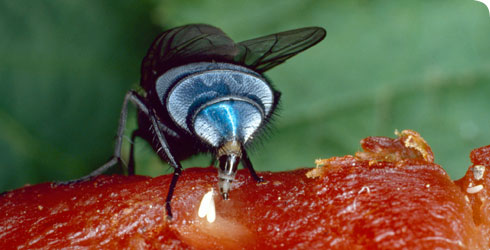Forensics
Some insects, particularly blowflies and their larvae, feed on carrion (decaying flesh) and they are quick to discover dead bodies – including those of humans. This makes them useful to police departments investigating murder cases, because the size and number of the flies gives a good indication of how much time has passed since death.
Museum scientists are often consulted and have been involved in over 120 criminal cases. Here is some more information about the species of insect they study to help them work out the circumstances of a suspicious death.
-

Calliphora vicina (urban bluebottle blowfly) - 17/04/2010
Calliphora vicina is a common bluebottle fly species that has followed and benefited from humans. While many people consider it a pest, it plays a vital role in the carbon cycle and has gained recognition for its role in assisting forensic investigations. Find out more about this species.
-
Coprophanaeus lancifer (giant Amazonian carrion scarab beetle) - 04/11/2010
Coprophanaeus lancifer is one of the largest scarab dung beetles in the western hemisphere, and can grow to the size of your fist. It is commonly found in the Amazon basin where it prefers to eat animal carcasses rather than dung. This remarkable beetle has legs lined with teeth to help it dig burrows for its young. Find out more about this heavy-weight beetle and why its presence indicates of a thriving forest.

